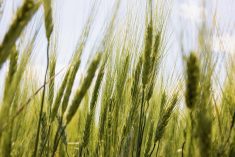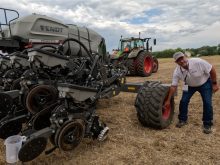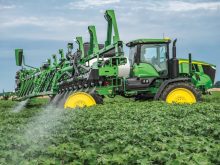Depending on which grower you ask, a “precision ag system” can mean anything from GPS-guided autosteer to advanced software that helps them manage just about every aspect of their farm.
But with so many new technologies, software platforms, upgrades and equipment providers on the market, what basic principles do growers need to keep in mind when choosing the right precision system?
When looking at precision software platforms, go with an established provider that’s charging an amount that feels appropriate for the value and level of service you’re getting.
Read Also

Claas brings 1000 Series SP forage harvesters to Canada
In mid-August, Claas unveiled its new line of Jaguar forage harvesters at an event in Visalia, California, deep in the heart of that state’s dairy region.
From an equipment and technology perspective, decide what features are important to you, and what you can live without. For example, GPS and autosteer are now standard equipment for about 98 per cent of growers. But we’re seeing more precision application technologies emerge that let you optimize seeding and input rates rather than applying one rate over an entire field.
When possible, try to find a precision system that’s scalable and can grow with you — especially if you want to intensify management practices or plan on picking up new land.
Many manufacturers are now moving towards in-cab displays that allow for upgrades. This lets you buy into a base display at a relatively low price, then pay to “unlock” additional features as your needs and demands on the equipment change.
Finally, take a careful look at the support network that’s available for your chosen precision ag system, so you can solve in-field issues while getting the most out of your technology investment.
Jared Rommens is the digital effectiveness manager, Corteva Agriscience, Agriculture Division of DowDuPont for Western Canada.















